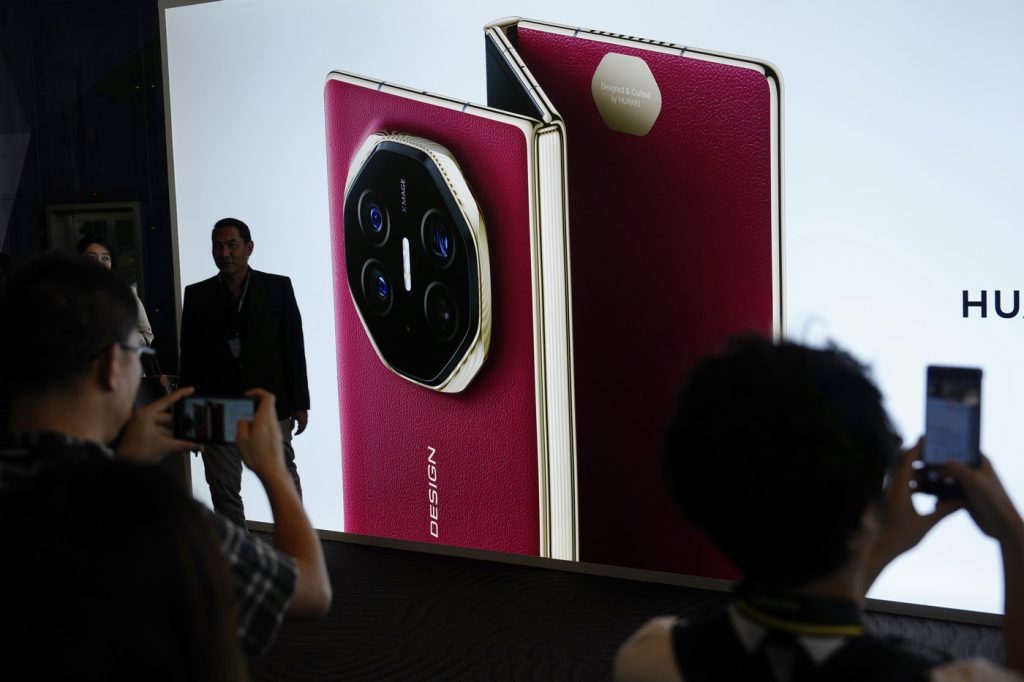KUALA LUMPUR, Malaysia (AP) – On Tuesday, Huawei introduced the world's first tri-foldable smartphone, the Huawei Mate XT, during a global launch event in Kuala Lumpur. This innovative device, first revealed in China five months earlier, is seen as a symbolic triumph for Huawei amid ongoing U.S. technology restrictions. However, analysts express concerns that factors such as pricing, durability, supply chain issues, and app availability could hinder its overall market success.
The Huawei Mate XT is priced at 3,499 euros (approximately $3,662) and features three mini-panels that fold twice, making it unique in the foldable phone market. Described as the thinnest foldable phone at just 3.6 millimeters (0.14 inches) thick, it boasts a 10.2-inch display that resembles an Apple iPad. Bryan Ma, vice president of device research at the International Data Corporation (IDC), noted that Huawei's innovative trifold design positions the company as a standout player in the market despite significant obstacles.
Despite facing challenges such as restricted access to critical chips and Google services due to U.S. sanctions, Huawei has seen a resurgence in its market presence over the past year, according to Ma. He described this comeback as a substantial victory for the company. Founded in China, Huawei has become a prominent global tech brand, navigating a complex landscape amidst the broader U.S.-China trade and technology disputes. Following U.S. actions in 2019 that severed Huawei's access to essential components and services, the company's phones have struggled to attract users worldwide.
Officials from the United States have labeled Huawei a security risk—a claim that the company has consistently denied. In response, the Chinese government has accused the U.S. of leveraging security concerns to stifle a competitive threat to American tech firms.
The Mate XT was initially launched in China on September 20, coinciding with Apple’s release of its iPhone 16 series. Analysts, however, anticipate that the high price tag of the Mate XT may prevent it from becoming a mainstream option for consumers. At the Kuala Lumpur launch event, Huawei also revealed other products, including the MatePad Pro tablet and Free Arc open-ear earbuds, alongside various wearable devices.
While showcasing its technological capabilities through these cutting-edge devices, Huawei's long-term prospects remain uncertain. Ongoing challenges, such as global supply chain disruptions, limited chip availability, and the absence of a robust software ecosystem, continue to loom over the company. Ruby Lu, an analyst from TrendForce, emphasized that the lack of Google Mobile Services creates significant barriers for Huawei's potential in international markets.
Huawei's market share in China for foldable phones reached an impressive 49% last year, according to IDC, while its global share stood at 23%, trailing behind Samsung's 33%. IDC projects that worldwide shipments of foldable phones could increase significantly, reaching 45.7 million units by 2028, compared to over 20 million units last year. Although numerous major brands have entered the foldable phone market, Apple has yet to release a competing device, with industry analysts suggesting that Apple's entry could catalyze growth in this segment.
As Huawei continues to innovate, the combination of its distinctive designs and the ongoing geopolitical challenges could ultimately shape its future within the competitive smartphone landscape.










